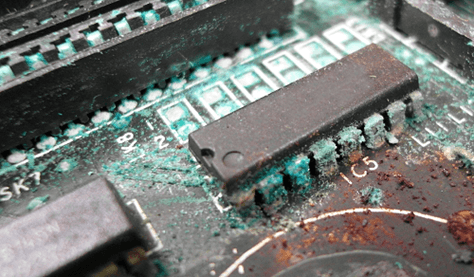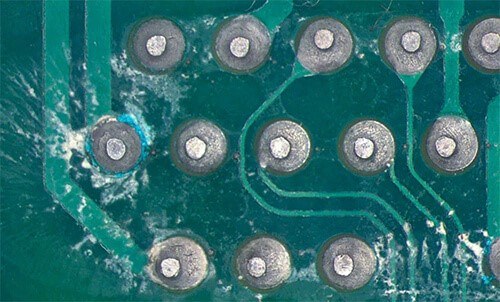After manufacturing and soldering, cleaning the Printed Circuit Board (PCB) or cleaning PCB assemblies is a crucial aspect of the electronic device assembly process that can impact the device’s overall durability, dependability, effectiveness, and lifetime. PCBs can become contaminated with flux or solder during assembly and production and dirt from handling or the environment, such as residues, dust, moisture, colophony or resin, fingerprints, or oxides. Some contaminants may have erosive qualities, causing circuit and connection damage down the road, resulting in shorts and failures, and lowering the device’s lifespan. Cleaning away this type of dirt will ensure no malfunctions in the device’s performance over time, extending its life.
The primary purpose of cleaning PCB assemblies is to eliminate resin and flux residues on populated printed circuit boards. PCB assemblies used in automotive, telecommunications, military, and aerospace industries must be free of any potentially harmful pollutants. For the following phase in the production process, such as underfill, epoxy staking, or conformal painting, contaminant-free PCBAs are required. If flux residue is left on the assembly, it can lead to poor wetting and delamination.
Types of Contaminants
A wide range of pollutants can collect on a PCB. These contaminants could predominantly be classified into two categories: Dry Contaminants and Wet Contaminants.
- Dry Contaminants could be dust or dirt.
- Wet Contaminants could be grime, waxy oil, flux, or soda.
What is the Purpose of Cleaning Printed Circuit Boards (PCBs)?
Cleaning PCBs is not always necessary, and it adds time and cost to the manufacturing or repair process. Therefore, there must be some justifications as to why there’s a need to clean PCBs. The reasons are as follows:
- Enhance the Aesthetic Appearance of PCB
If you are a contract manufacturer of PCBs, the board’s visual appearance reflects on your job. A visible, oily residue near a solder joint may raise red lights for your customer’s incoming quality control inspectors. If the flux residue chars and develops spots on the solder joints, it may appear to be a real defect, such as a solder joint void or “blow hole.” - Increase the PCB’s Reliability
The nature of the final product is usually what drives reliability needs. For example, Nobody loses their life if a disposable product fails, such as a computer keyboard. Whereas, specifications for pacemaker electronics, where a board failure could result in death, will be significantly more stringent. After assembly and any future rework, cleaning will be required, and the process will be extensively evaluated for efficacy and repeatability. - Prevent Corrosion of PCB and its Component
Acidic flux residues are left on electrical circuit boards. If the residues are not removed with a cleaning process, they might draw in ambient moisture from the air and cause corrosion of component leads and PCB contacts.

- Prevent Dendritic Growth Due to Ionic Contamination
When polar or ionic particles from flux residue and other sources are exposed to moisture in the ambient air, and a current is applied, they can form a chain or branch known as a dendrite. Because these dendrites are conductive, they form an unintentional trace that causes current leakage or, over time, even a short circuit.

Conclusion
A clean and clear PCB might also be advantageous during the inspection process or for future troubleshooting. When the board and all of its components are free of any remaining contaminates or leftover solder, it is much easier to locate faults or identify potential difficulties.
While choosing a PCB manufacturing partner think about cost optimization, adequate material usage, delivery time, and more. World electronics is your go to partner as we follow the latest IPC standards and tolerances and DFM and DFA rules to better suit your next upcoming PCB design.
To learn more about different PCB cleaning methods, refer to this article on our news page.
For more on WORLD’s capabilities, visit our services page and follow us on LinkedIn.
Related Articles
SMT, Thru Hole, Mixed Technology
Box Build/Higher Level Assembly